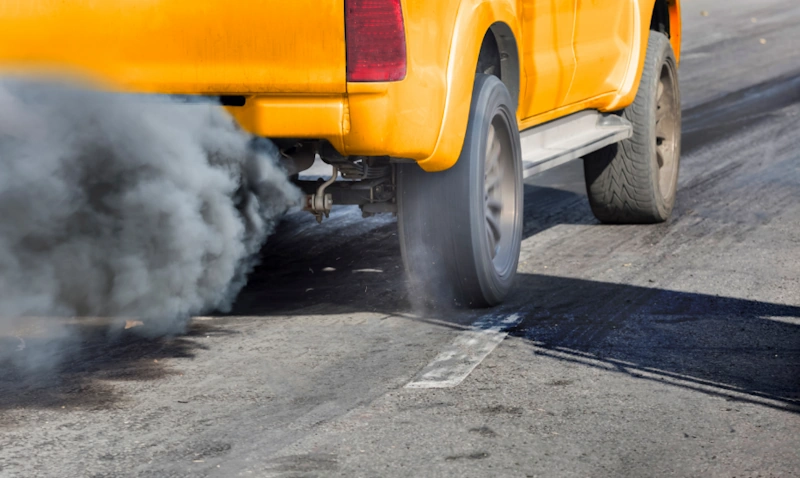Is it illegal to drive without a catalytic converter? In the complex world of automotive regulations, one question that often arises is whether driving without a catalytic converter is illegal. The catalytic converter, a crucial component of a vehicle’s exhaust system, is pivotal in reducing harmful emissions. Understanding the legal implications of driving without a catalytic converter is essential for vehicle owners to comply with environmental laws and regulations. This comprehensive article delves into the legality, environmental impact, and potential consequences of driving without a catalytic converter.
The Function of Catalytic Converters
Is it illegal to drive without a catalytic converter? Before exploring the legal aspects, it’s crucial to grasp the function of a catalytic converter. This emissions control device is designed to reduce the toxicity of exhaust gases produced by an internal combustion engine. It achieves this by catalyzing chemical reactions that convert harmful pollutants such as nitrogen oxides, carbon monoxide, and unburned hydrocarbons into less harmful substances like carbon dioxide, nitrogen, and water vapor.
Legal Requirements
Is it illegal to drive without a catalytic converter? In many jurisdictions, the use of catalytic converters in vehicles is mandated by law. These regulations aim to curb air pollution and promote environmental sustainability. Consequently, removing or driving without a catalytic converter may be illegal in numerous places.
Federal Regulations in the United States
Is it illegal to drive without a catalytic converter? The Clean Air Act prohibits tampering with or removing emissions control devices, including catalytic converters, from motor vehicles in the United States. This federal regulation applies to all states and is enforced by the Environmental Protection Agency (EPA). Violating these regulations can result in substantial fines and penalties.
State and Local Regulations
Is it illegal to drive without a catalytic converter? Individual states and local jurisdictions may also have specific emissions standards and vehicle inspection programs. Many of these programs require vehicles to have an intact and functioning catalytic converter to pass inspection. Failure to comply with state and local regulations can lead to fines, vehicle impoundment, or the inability to renew vehicle registration.
Environmental Impact
Is it illegal to drive without a catalytic converter? Beyond the legal ramifications, the environmental impact of driving without a catalytic converter is a significant concern. Vehicles emit pollutants that contribute to air pollution and climate change. A missing or malfunctioning catalytic converter exacerbates these environmental issues by releasing unfiltered pollutants into the atmosphere.
Air Quality
Is it illegal to drive without a catalytic converter? Catalytic converters play a pivotal role in improving air quality by reducing the emission of harmful pollutants. Without this device, the concentration of pollutants in the air increases, posing risks to human health and the environment.
Climate Change Impact
Carbon dioxide (CO2) emissions from vehicles majorly contribute to climate change. Catalytic converters help minimize these emissions by converting harmful gases into less environmentally damaging substances. Driving without a catalytic converter contributes directly to heightened greenhouse gas emissions.
Consequences of Driving Without a Catalytic Converter
Is it illegal to drive without a catalytic converter? The consequences of driving without a catalytic converter extend beyond legal and environmental concerns, impacting vehicle performance and the overall driving experience.
Reduced Fuel Efficiency
Catalytic converters also play a role in optimizing fuel efficiency. A missing or malfunctioning converter can increase fuel consumption and reduce overall miles per gallon (MPG).
Engine Damage
Is it illegal to drive without a catalytic converter? The absence of a catalytic converter can expose the engine to increased levels of pollutants, potentially leading to accelerated wear and damage to engine components.
Increased Noise Levels
Catalytic converters act as a muffler, reducing the noise the exhaust system produces. Driving without a catalytic converter may increase noise levels, violating noise pollution regulations in some areas.
Ensuring Compliance and Responsible Driving
Vehicle owners must take proactive measures to ensure compliance with emissions regulations and foster responsible driving. Here are some practical steps to consider:
Regular Vehicle Maintenance
Schedule routine maintenance checks for your vehicle, including inspections of the catalytic converter. Promptly address any issues to ensure the proper functioning of emissions control systems.
Emissions Testing
In areas with emissions testing programs, participate in regular testing to verify that your vehicle meets established emission standards. This can help identify and rectify potential problems with the catalytic converter before they lead to legal or environmental consequences.
Replacement of Faulty Converters
Is it illegal to drive without a catalytic converter? If your catalytic converter is damaged or ineffective, consider replacing it promptly. Working with certified mechanics and using quality replacement parts ensures compliance with regulations and maintains the environmental benefits of emissions control.
Legal Consultation
If you have questions about the legality of driving without a catalytic converter in your specific jurisdiction, seek legal advice. Consult with local authorities or legal professionals to understand the regulations applicable to your area.
Educational Outreach
Share information within your community about the importance of catalytic converters and adherence to emissions regulations. Raising awareness can contribute to a collective commitment to environmental responsibility.
Future Developments and Environmental Initiatives
Is it illegal to drive without a catalytic converter? As society becomes increasingly aware of the environmental impact of vehicle emissions, ongoing efforts are being made to implement stricter regulations and promote eco-friendly driving practices. Governments and organizations are investing in alternative technologies, such as electric vehicles and hydrogen fuel cells, to further reduce transportation’s carbon footprint.
Advancements in Vehicle Technology
Is it illegal to drive without a catalytic converter? Ongoing advancements in vehicle technology focus on reducing emissions and improving fuel efficiency. As the automotive industry evolves, innovations such as cleaner-burning fuels and more efficient catalytic converters are likely to play a crucial role in minimizing the environmental impact of driving.
Policy Changes
Expectations for environmental stewardship are shaping policy changes globally. Governments are enacting and revising regulations to align with climate goals and reduce overall air pollution. Staying informed about evolving policies will be essential for vehicle owners to maintain compliance.
Key Takeaways
In conclusion, whether it is illegal to drive without a catalytic converter is not only a legal consideration but also a crucial aspect of environmental responsibility. Vehicle owners must be aware of and adhere to federal, state, and local regulations governing emissions control devices to avoid legal consequences and contribute to the collective effort to combat air pollution and climate change. Furthermore, recognizing the broader environmental and vehicular implications reinforces the importance of maintaining and preserving the integrity of catalytic converters for a sustainable and responsible driving experience.
Vehicle owners contribute to collective efforts to create a cleaner and more sustainable future by understanding and adhering to emissions regulations. Proactive measures, regular maintenance, and awareness of local laws can collectively ensure that driving without a catalytic converter remains a scenario avoided, promoting legal compliance and environmental conscientiousness in the ever-evolving transportation landscape. As we look to the future, the continued commitment to environmentally friendly driving practices will undoubtedly play a pivotal role in shaping a cleaner and healthier world for future generations.

